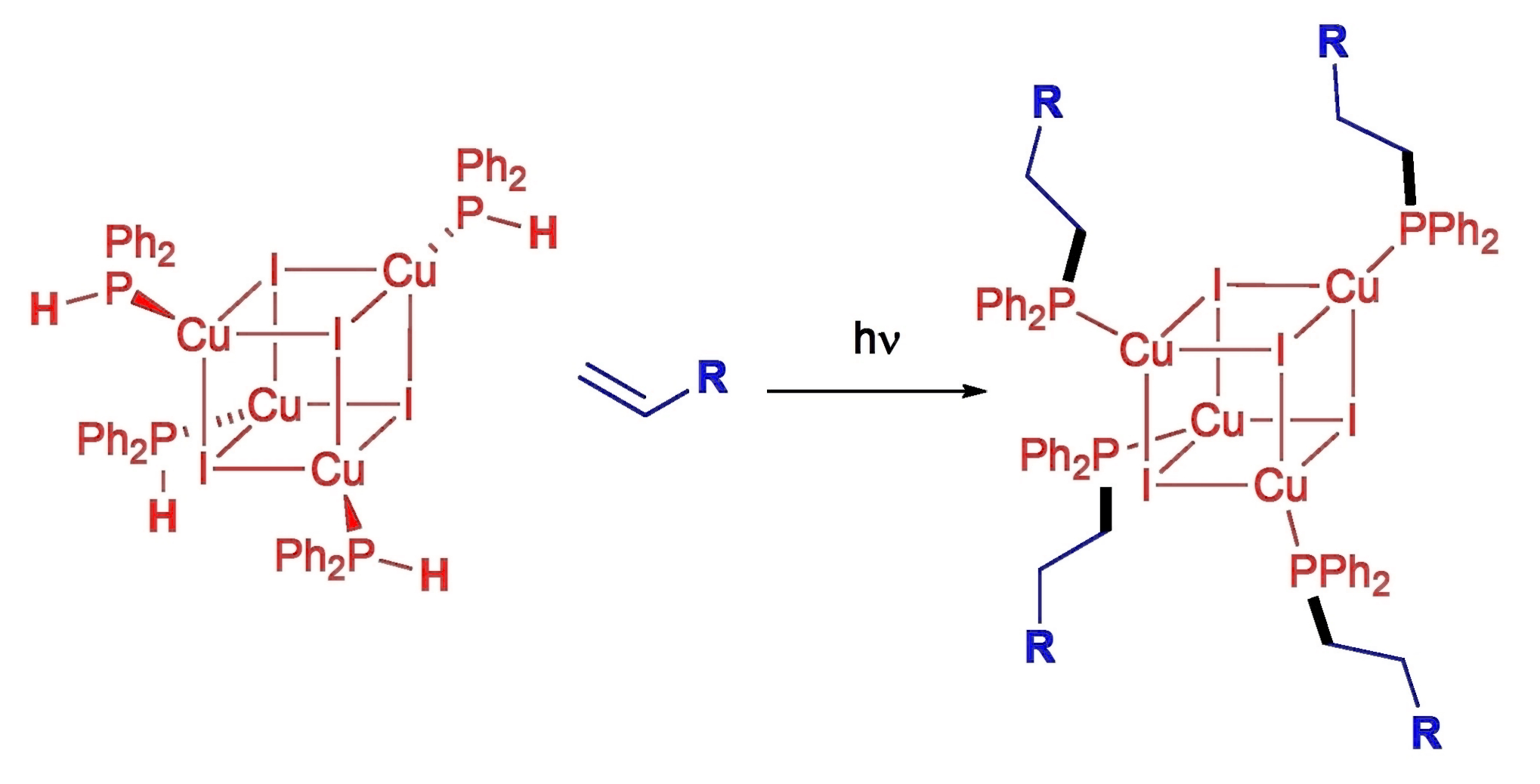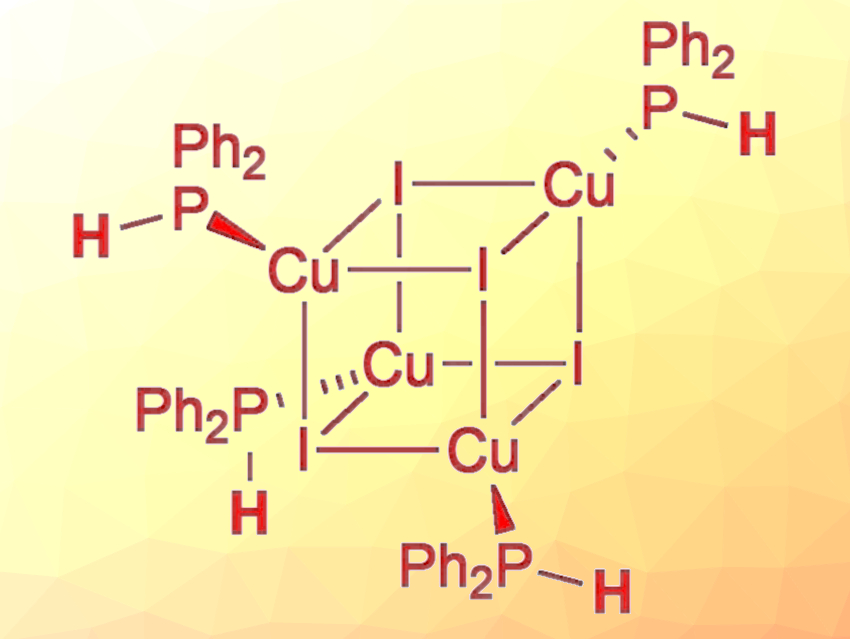In the field of photoactive materials, systems based on earth-abundant, low-cost transition metals have attracted research interest. For example, tetranuclear copper-iodide clusters of the type [Cu(μ3-X)L]4 with a cubane-like Cu4X4 core (X = halogen, L = nitrogen- or phosphorus-based ligand) are attractive luminescent, stimuli-responsive materials. Simple, modular approaches for the structural diversification of these compounds could be useful to tune their properties for different applications.
Stéphane Bellemin-Laponnaz, University of Strasbourg, France, and colleagues have synthesized a stable tetranuclear copper-iodide cluster with photoreactive P–H bonds ([Cu(μ3-I)(PPh2H)]4, pictured above). The cluster was synthesized by heating copper iodide in the presence of diphenylphosphine in toluene, which gave the desired product in a yield of 96 %.
The compound is an interesting precursor for further functionalization via hydrophosphination reactions (pictured below). UV irradiation of the cluster in the presence of various alkenes allows its direct functionalization, giving access to a wide range of copper cubane complexes. Among the synthesized examples is a cluster decorated with poly(ethylene glycol) (PEG) chains. This compound represents a new family of luminescent complexes with unprecedented solubility in water.

- A Stable and Photoreactive Copper‐Iodide Cubane Suitable for Direct Post‐Functionalization,
Damien Bissessar, Julien Egly, Thierry Achard, Pascal Steffanut, Matteo Mauro, Stéphane Bellemin‐Laponnaz,
Eur. J. Inorg. Chem. 2022.
https://doi.org/10.1002/ejic.202200101




